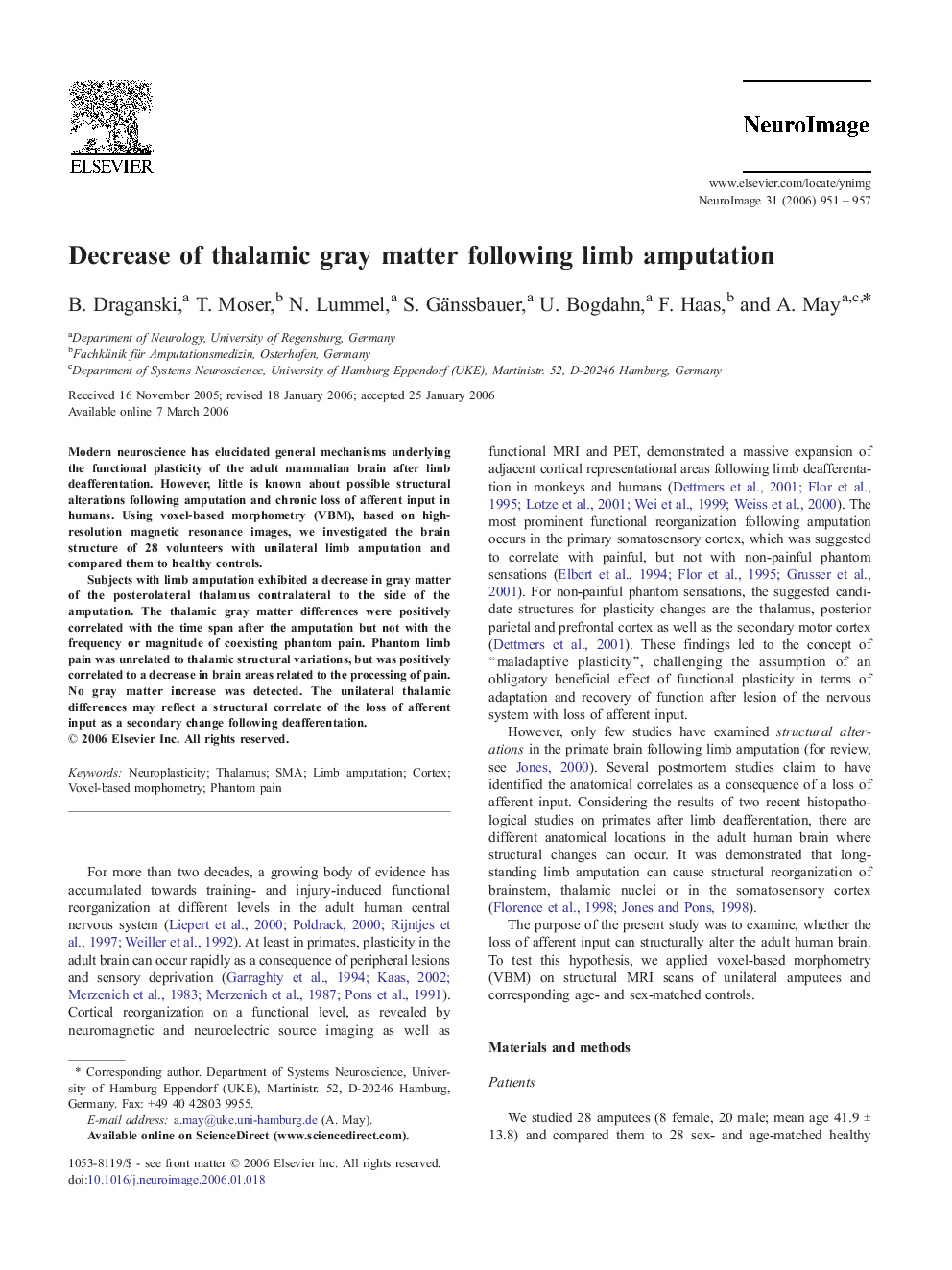| Article ID | Journal | Published Year | Pages | File Type |
|---|---|---|---|---|
| 3074041 | NeuroImage | 2006 | 7 Pages |
Modern neuroscience has elucidated general mechanisms underlying the functional plasticity of the adult mammalian brain after limb deafferentation. However, little is known about possible structural alterations following amputation and chronic loss of afferent input in humans. Using voxel-based morphometry (VBM), based on high-resolution magnetic resonance images, we investigated the brain structure of 28 volunteers with unilateral limb amputation and compared them to healthy controls.Subjects with limb amputation exhibited a decrease in gray matter of the posterolateral thalamus contralateral to the side of the amputation. The thalamic gray matter differences were positively correlated with the time span after the amputation but not with the frequency or magnitude of coexisting phantom pain. Phantom limb pain was unrelated to thalamic structural variations, but was positively correlated to a decrease in brain areas related to the processing of pain. No gray matter increase was detected. The unilateral thalamic differences may reflect a structural correlate of the loss of afferent input as a secondary change following deafferentation.
